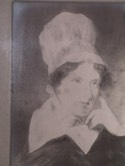Clement-Jones family - Person Sheet
Clement-Jones family - Person Sheet
Spouses
1Mary BEAKBANE  , 816
, 816
 , 816
, 816Birth1765
Death1824
FatherJohn BEAKBANE , 817 (1720-1786)
MotherMary WILSON , 2337 (1727-1792)
Marriage1787
Notes for John WAKEFIELD
Of Stricklandgate, Kendal Westmorland. Gunpowder manufacturer. There is an extensive Wakefield pedigree in Burke’s Landed Gentry1952 edition.
Sedgwick House was built in 1868 by Paley and Austin for William Henry Wakefield.
The Wakefield family owned one of the many gun powder works in Cumbria, this one near to the river Kent. The current house is a replacement for the original house built by John Wakefield I, great grand father to William Henry Wakefield.
The house was requisitioned by the Government during the second world war and the surrounding lands used as barracks, armament stores and a munitions stores, was in use as a school from 1945 to 1987, and from 1987 onwards has been private flats.
Westmorland was once a major centre for gunpowder manufacture, with seven factories.
Old Sedgwick was the earliest gunpowder works in the area, established in about 1764, apparently as a speculative commercial venture to supply mines and quarries in the north of England with blasting powder. Until then the main buyer was the military and most suppliers were based in the south of England. The area was absolutely ideal for the task - it's sparsely populated, allowing this potentially dangerous business to be sited away from people. There was plenty of woodland to supply charcoal - a key ingredient in the process - and there were fast flowing rivers to supply power.
Waterwheels drove grinding stones which powdered charcoal and saltpetre, and presses which squeezed the mixture together into blocks. Local limestone was used for the buildings because it didn't create sparks. Leather liners ensured the stones didn't meet and the area was hedged with trees and bounded by earth banks to absorb blast from the inevitable accidents.
At its height each factory might have been producing 20 to 30 tons a week - 40 per cent of national production.
Sedgwick House was built in 1868 by Paley and Austin for William Henry Wakefield.
The Wakefield family owned one of the many gun powder works in Cumbria, this one near to the river Kent. The current house is a replacement for the original house built by John Wakefield I, great grand father to William Henry Wakefield.
The house was requisitioned by the Government during the second world war and the surrounding lands used as barracks, armament stores and a munitions stores, was in use as a school from 1945 to 1987, and from 1987 onwards has been private flats.
Westmorland was once a major centre for gunpowder manufacture, with seven factories.
Old Sedgwick was the earliest gunpowder works in the area, established in about 1764, apparently as a speculative commercial venture to supply mines and quarries in the north of England with blasting powder. Until then the main buyer was the military and most suppliers were based in the south of England. The area was absolutely ideal for the task - it's sparsely populated, allowing this potentially dangerous business to be sited away from people. There was plenty of woodland to supply charcoal - a key ingredient in the process - and there were fast flowing rivers to supply power.
Waterwheels drove grinding stones which powdered charcoal and saltpetre, and presses which squeezed the mixture together into blocks. Local limestone was used for the buildings because it didn't create sparks. Leather liners ensured the stones didn't meet and the area was hedged with trees and bounded by earth banks to absorb blast from the inevitable accidents.
At its height each factory might have been producing 20 to 30 tons a week - 40 per cent of national production.


